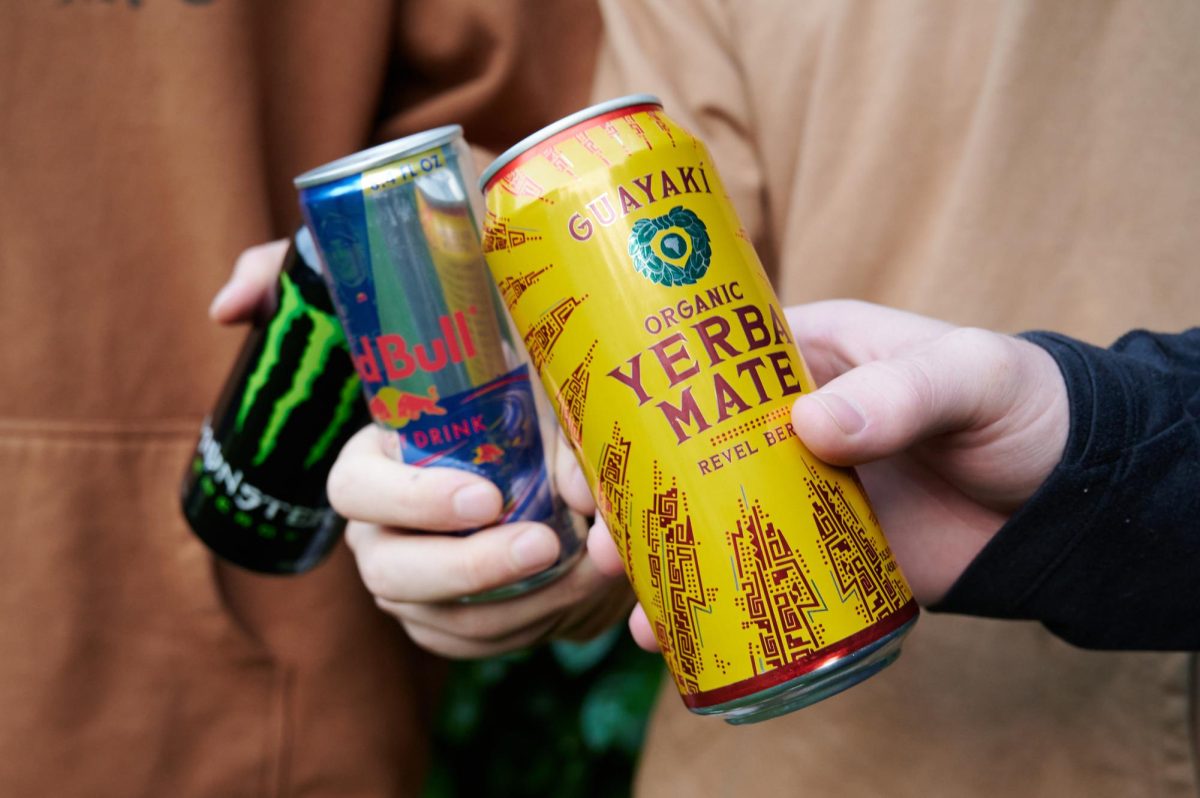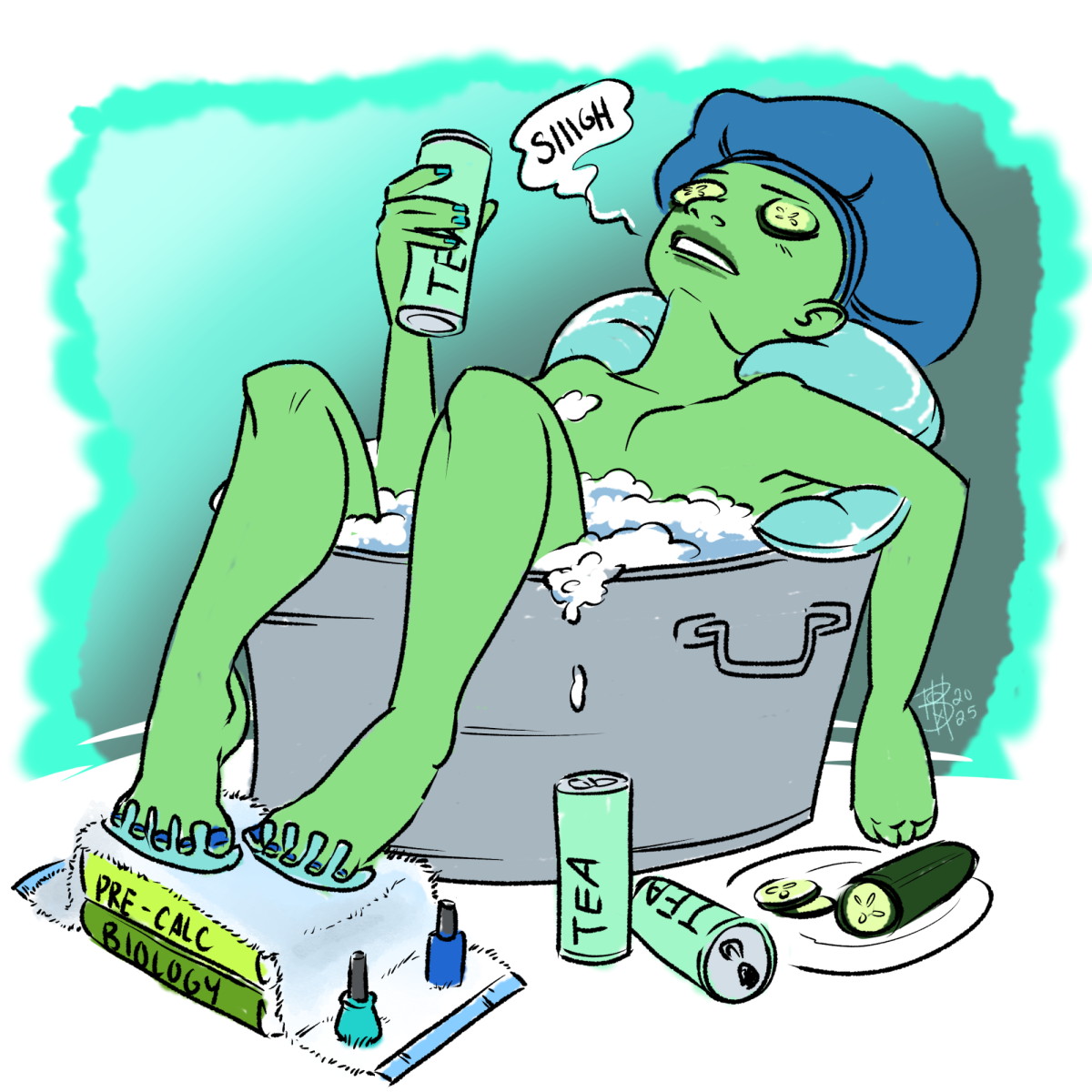Four Lokos, the highly-caffeinated, strong-spirited, drinks notorious to college campuses haven’t actually had any caffeine since 2010.
“As part of a voluntary product reformulation… we removed those ingredients from the product,” the Four Loko website says.
Referring not only to caffeine, but also to taurine, guarana, and wormwood– which were the original ‘four’ in the cans. Their website cites them as, “potential health dangers.”
You won’t find a compound like Taurine in a Four Loko anymore. But you can find it in any can of Red Bull, Monster, or Rockstar. All energy drinks have a number of different compounds added to them– what are they? Are they actually even that dangerous?
Let’s start with caffeine: Most university students know the main active ingredient in energy drinks well, it’s the one that gives you that buzz.
“A lot of people over the years have dug and dug and dug to try to make caffeine out to be really bad. Actually at low doses … if it’s below 200 milligrams, it’s just not a super bad thing, until you start consuming excessive amounts,” said Mary Clusky, a retired associate professor in the College of Health and registered dietician.
The FDA recommends not exceeding 400 milligrams of caffeine a day. Even the upper end of caffeinated energy drinks generally don’t exceed 300 milligrams.
But what about the other ingredients? You’d likely need a Ph.D. biochemist to translate the many hyphenated, three-syllable words.
Luckily, there are a few on campus.
Let’s start by looking at one of the more popular additives; Taurine.
Taurine is an amino acid, a type of molecule that makes up proteins in living organisms– with some exceptions. Taurine is one of the few amino acids that does not make up any proteins.
Yet, it’s one of the most abundant in the body.
Taurine is one of the main components of bile and is mostly found in nervous cell tissue. Contrary to popular belief, it’s not derived from bull testicles, but it was first discovered in bull bile.
Researchers now know that deficiencies in taurine can cause a number of maladies, which is why the adult human body naturally produces enough of it on its own.
In fact, it is the most abundant amino acid in the retina. It’s also a cytoprotectant, has a role in the regulation of the compounds NAD+ and NADH, controls gene transcription factors, modulates endoplasmic reticulum stress and can sometimes act as a substitute for GABA – a neurotransmitter.
In less technical language, “it does a lot of stuff naturally in our bodies,” said Ryan Mehl, a professor in the Department of Biochemistry and Biophysics.
This is what makes it hard to know exactly what adding 1000 milligrams of taurine, found in an 8.4-ounce can of RedBull, can do over a long-term period.
Compare this to caffeine, Mehl explained, which the body cannot naturally produce on its own. Caffeine concentrations can easily be monitored and tracked throughout the body’s systems and the effects cataloged which has not been done with taurine.
“Taurine is a little bit of a mystery,” Mehl said.
But while Taurine doesn’t seem to explicitly cause a problem in the body, there is evidence some of the other additives do.
Carnitine (seen on nutrition labels as L-Carnitine or L-Carnitine L-Tartrate) is the product of two amino acids (lysine and methionine).
It has gained infamy in the past few years after a major journal article found it to be the compound in red meat that can be linked to heart diseases.
Previous studies established carnitine’s role in moving long-chain fatty acids, which are the long-term energy storage of the body into cells.
However, large amounts of it given in supplements to mice caused a marked increase in the compounds TMA and TMAO, which prime the body for heart disease. Particularly atherosclerosis– the thickening and hardening of the arteries that can lead to heart attacks, strokes, vascular dementia, and erectile dysfunction.
Monster Energy, Rockstar Energy Drink and NOS Energy Drink are the main drinks that add L-carnitine to their formulas. Having one every day also supplements the body with l-carnitine, meaning it could lead to long-term heart problems.
But what about vitamins?
B-group vitamins (Thiamine, B12, Riboflavin, Niacin, Pantothenic Acid, B6, Biotin, and Folate) appear pretty frequently on the nutrition labels for energy drinks. Across the board, they support all sorts of things in the body.
This makes determining long-term effects of them difficult to capture– much like taurine. In fact, the National Institute of Health says that research on vitamin B12, “ shows that people with high levels of vitamin B12 have a higher risk of cancer. But other research shows that the risk of cancer is higher in people with low levels of vitamin B12 or that vitamin B12 levels don’t affect cancer risk.”
This changes, depending on the B-group vitamin, but as long as you’re staying within the recommended doses, research hasn’t shown any adverse health effects.
“I know with vitamins for the most part, if we don’t need them, we don’t absorb them,” Cluskey said.
But, according to Cluskey, one of the riskiest additions to an energy drink is alcohol.
Alcohol is a depressant– it slows you down, while caffeine and sugar speed you up. Drinking both at the same time can inhibit you from feeling drunk.
“So more people are drinking larger amounts of alcohol and not becoming aware of how drunk they are,” said Cluskey.
If you’re interested in learning more, the National Institute of Health publishes open-access papers frequently and has consumer fact sheets for several vitamins and minerals.

















